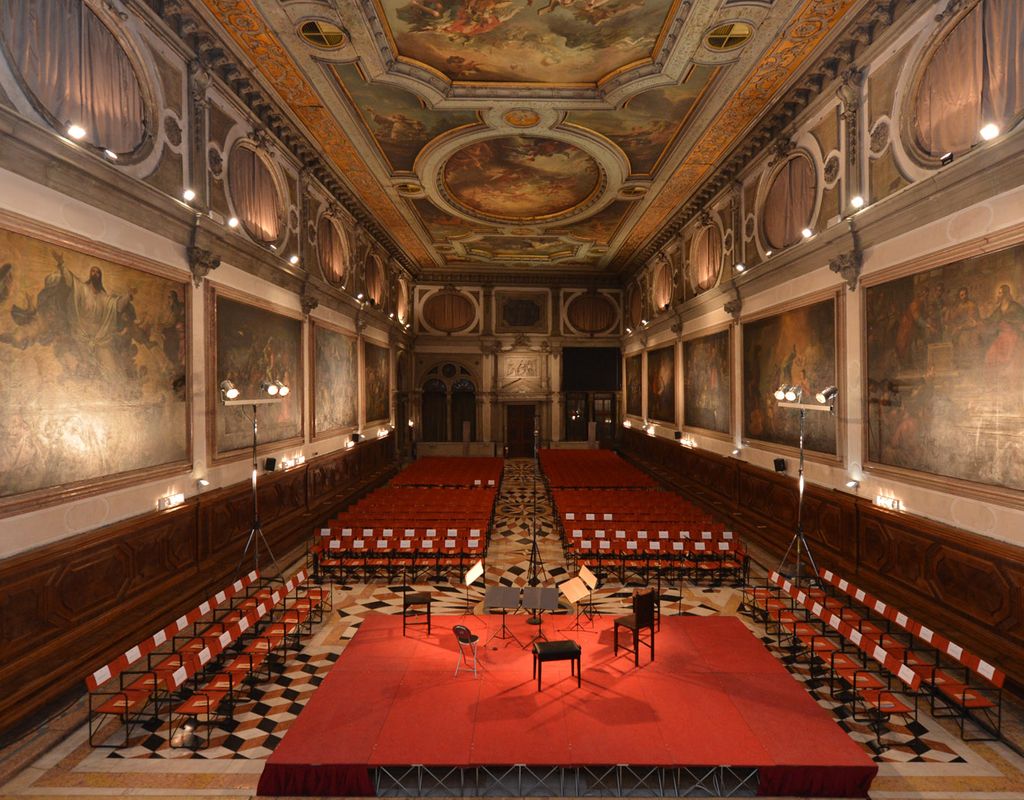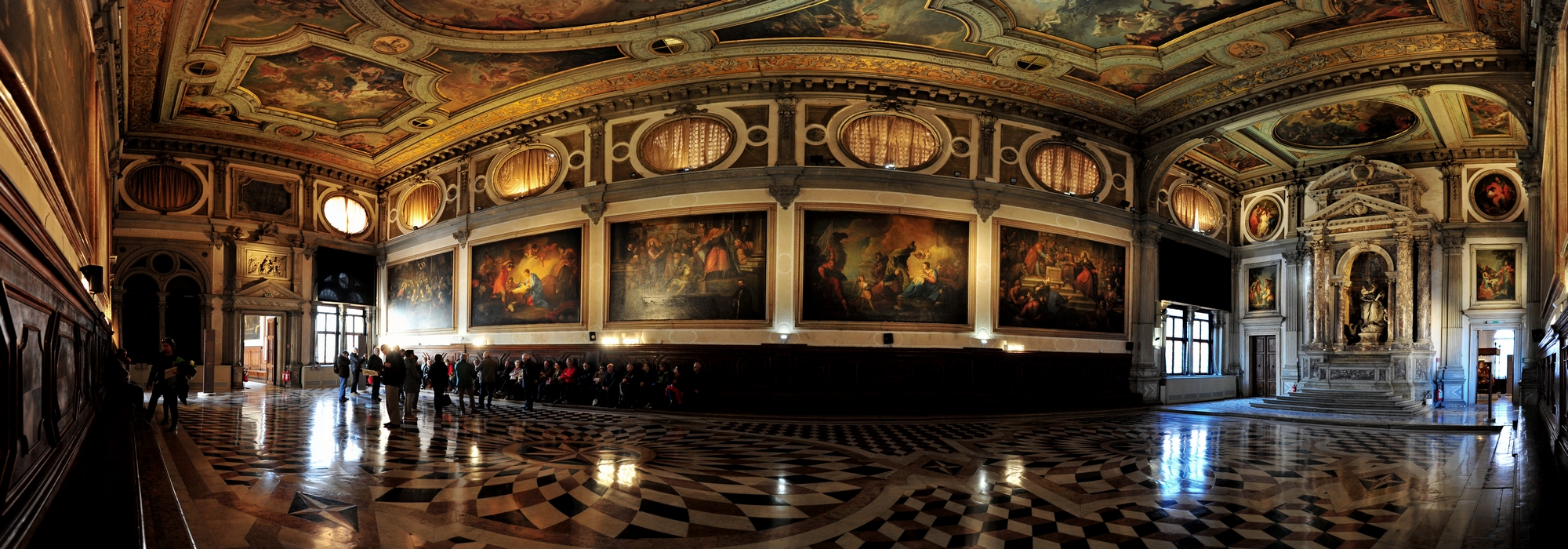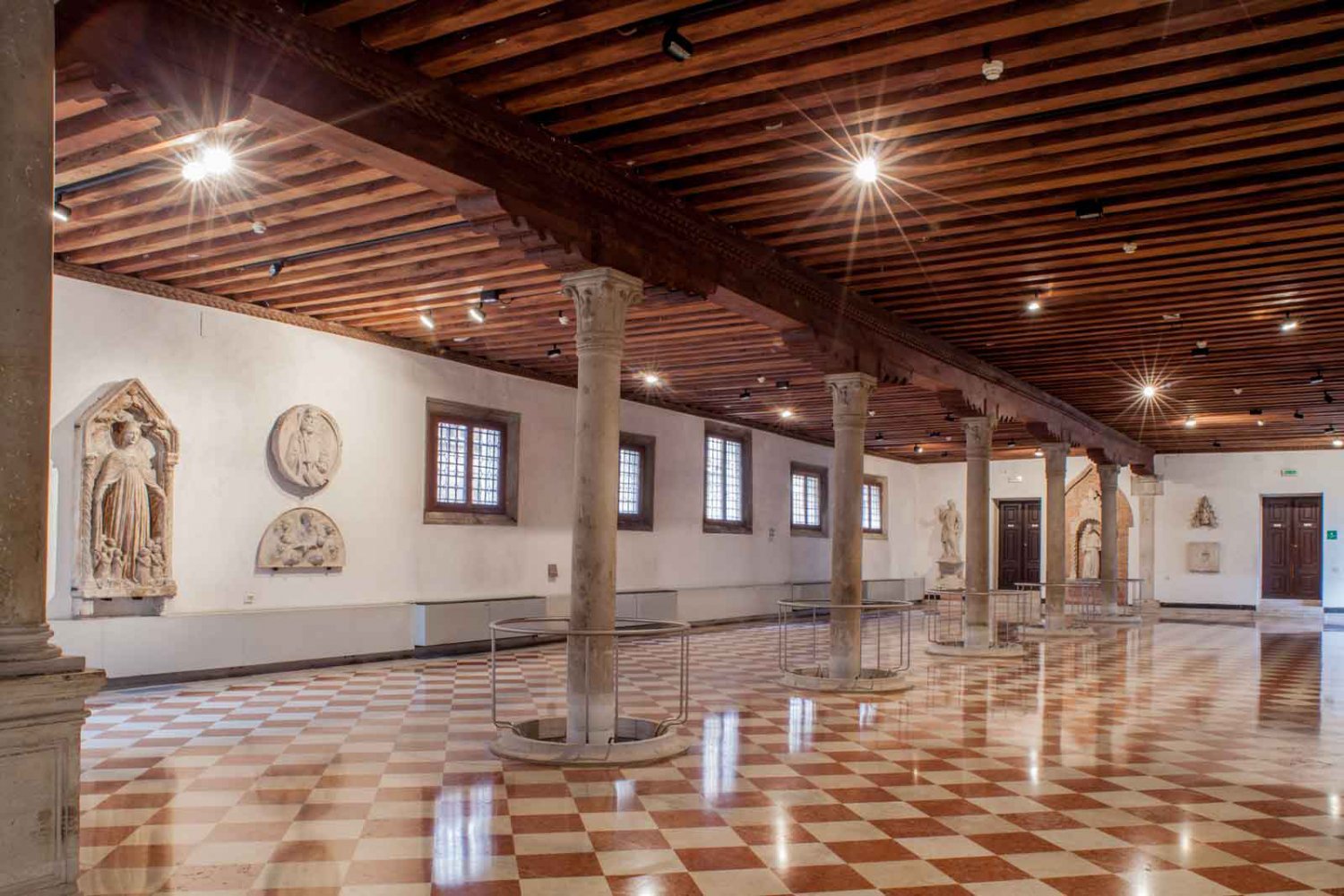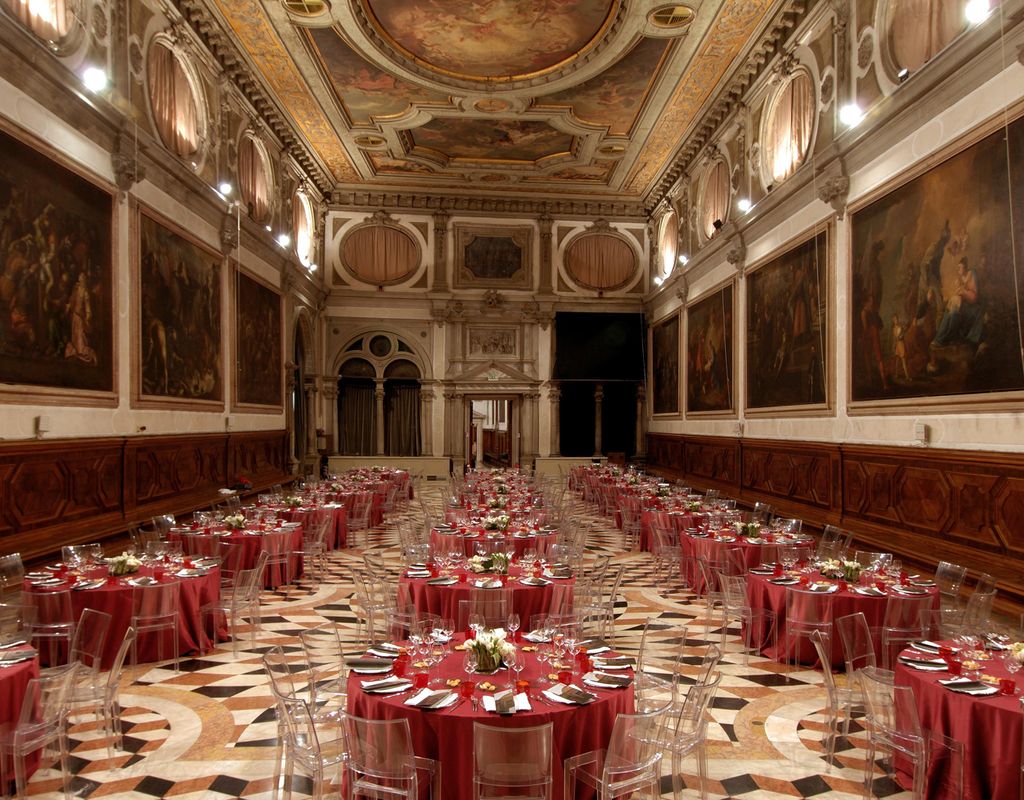


It is a monumental complex with illustrious examples of Gothic, Renaissance and Venetian Baroque art and architecture, by Codussi, Lombardo, Massari, Morlaiter, Palma il Giovane, Tintoretto, Longhi.

The School has been home to the lay brotherhood of the same name for over seven centuries, as well as a museum open to the public that hosts events, conventions, conferences, concerts, exhibitions, weddings, gala evenings.

In addition to being a prestigious museum in the historic center, the School is also an evocative place to host different types of events in Venice. The rooms are the ideal setting for planning unforgettable events: meetings, congresses, conferences, concerts, gala evenings, award ceremonies, weddings, art exhibitions. Each event created is exclusive and tailor-made to meet every specific need.

Founded in 1261, the Scuola di San Giovanni, one of the richest and most prestigious in Venice, was a corporation of Battuti, which gathered around it the devotion to its patron saint, St. John the Evangelist. Initially its headquarters were in Sant'Aponal, but soon moved to San Stin.

In 1369 the School received - from Philippe de Mézières, chancellor of the kingdoms of Cyprus and Jerusalem - a fragment of the True Cross, which immediately became the symbol of the School and the object of extraordinary veneration.

In the fifteenth century the headquarters of the School was renovated and enlarged thanks to donations, and in the years 1414-1420 it was rebuilt. Having become the Scuola Grande, under the supervision of the Council of Ten, it was decided to embellish the site with works of art.

The first to work on it was Jacopo Bellini, whose works soon perished. In the second half of the fifteenth century the architectural works also continued; in particular, the septum leading to the courtyard was built, the author of which is Pietro Lombardo (works carried out between 1478 and 1481).

Subsequently it was decided to place in the Great Hall of the brotherhood a series of canvases on the miracles of the relic of the Cross in Venice, to the creation of which, between 1496 and 1501, some of the main artists active in the city were called. Gentile Bellini painted three canvases, Giovanni Mansueti painted two, one Vittore Carpaccio, one Lazzaro Bastiani and one Benedetto Diana. A ninth had been painted by Perugino, but has not been preserved; all the others are kept in the Accademia Galleries.

In the sixteenth century Titian also intervened, painting the Vision of St. John the Evangelist (now in the National Gallery in Washington) for the ceiling of the Sala dell'Albergo.

Between 1727 and 1762, another artist, Giorgio Massari, was called to give the Chapter Hall its current appearance; in the same century Jacopo Guarana painted a Vision of the seven angels and seven vases for the school.

Only after five and a half centuries of activity, due to the 1807 edict of Napoleon, the Scuola di San Giovanni was suppressed, like all the others, to be reconstituted in 1856.
The canvases of the miracles of the Cross
The large canvases painted for the School were removed following the suppression and today they are all in the Gallerie dell'Accademia.
See the images of the works>
Great School of St. John the Evangelist - Virtual Tour 360°
Address: Sestiere San Polo, 2454
Phone: 041.5244022
Site:
https://www.scuolasangiovanni.it/Location inserted by
Marina Gemma